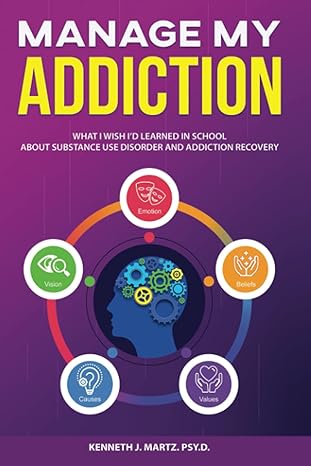Addictions, a complex and multifaceted pathology, transcends mere habit, evolving into a chronic brain disease. It’s characterized by the compulsive pursuit of substances or behaviors despite devastating consequences on physical and mental well-being, interpersonal relationships, and professional stability. Understanding the intricate mechanisms underlying addiction is paramount in crafting effective prevention and intervention strategies
Deciphering Addiction: Beyond the Surface
Addiction’s insidious nature manifests through a constellation of symptoms:
- Craving and Obsession: An overwhelming, uncontrollable urge to consume a substance or engage in a behavior, dominating thoughts and actions. This craving isn’t merely a desire; it’s a relentless, consuming need.
- Loss of Control: The inability to regulate consumption or engagement, leading to exceeding intended limits. This loss of control is a hallmark of addiction, signifying a shift in brain function.
- Continued Use Despite Harm: Persistent engagement in addictive behaviors despite clear awareness of their detrimental effects. This paradoxical behavior highlights the powerful influence of addiction on decision-making.
- Withdrawal Syndrome: The onset of unpleasant physical and/or psychological symptoms upon cessation or reduction of substance use or behavior. These symptoms can range from mild discomfort to severe distress.
- Tolerance: The need for progressively higher doses or increased frequency to achieve the desired effects. This adaptation of the brain underscores the chronic nature of addiction.
The Spectrum of Addictions: Chemical and Behavioral
Addictions are broadly categorized into:
- Substance Addictions (Chemical Dependencies): These involve dependence on psychoactive substances that alter brain chemistry, including:
- Alcohol: A widely accessible depressant with significant health and social consequences.
- Tobacco (Nicotine): A highly addictive stimulant with severe health risks.
- Illicit Drugs: Cannabis, cocaine, heroin, and synthetic drugs, each with unique and dangerous effects.
- Prescription Medications: Anxiolytics, opioids, and sleeping pills, which can lead to dependence when misused.
- Behavioral Addictions (Process Addictions): These involve dependence on behaviors that trigger reward pathways in the brain:
- Gambling Disorder: Pathological gambling, including online and offline forms.
- Gaming Disorder: Excessive and problematic engagement in video games.
- Internet and Social Media Addiction: Compulsive use of the internet and social media platforms.
- Compulsive Shopping Disorder: Uncontrollable spending and purchasing.
- Eating Disorders: Anorexia nervosa, bulimia nervosa, and binge-eating disorder.
- Emotional dependancy: being dependant on another person for emotional stability.
- Exercise addiction: excessive amounts of exercise.

Unraveling the Roots of Addiction: Risk Factors
The development of addiction is influenced by a complex interplay of factors:
- Biological Factors:
- Genetic Predisposition: Inherited traits that increase susceptibility to addiction.
- Neurobiological Factors: Variations in brain structure and function that affect reward processing.
- Sex differences: Hormonal and neurobiological differences between men and women.
- Co-occurring Mental Disorders: The presence of conditions like depression, anxiety, and ADHD.
- Psychological Factors:
- Stress and Trauma: Exposure to traumatic experiences and chronic stress.
- Low Self-Esteem and Emotional Dysregulation: Difficulty managing emotions and a negative self-image.
- Coping mechanisms: Substance or behaviors used to avoid emotional pain.
- Environmental and Social Factors:
- Peer Influence and Social Pressure: The impact of social circles and cultural norms.
- Socioeconomic Disadvantage: Poverty, lack of access to resources, and social inequality.
- Early Exposure to Substances: Exposure to drugs or alcohol during childhood or adolescence.
- Family dynamic: Exposure to addiction within the family.
Fortifying Against Addiction: Prevention Strategies
Proactive prevention is crucial in mitigating the impact of addiction:
- Comprehensive Education and Awareness Campaigns: Providing accurate information about the risks of substance use and addictive behaviors.
- Cultivating Psychosocial Skills: Developing resilience, emotional intelligence, and coping mechanisms.
- Early Intervention Programs: Identifying and addressing risk factors in vulnerable individuals and communities.
- Targeted Prevention Initiatives: Tailoring interventions to specific populations at high risk.
- Promoting healthy lifestyles: Encouraging healthy habbits, hobbies, and social activities.
Taking Action: Therapeutic Interventions
Effective treatment approaches for addiction include:
- Psychological Therapies:
- Cognitive Behavioral Therapy (CBT): Addressing maladaptive thought patterns and behaviors.
- Motivational Interviewing: Enhancing motivation for change.
- Family Therapy: Addressing family dynamics and supporting recovery.
- Medication-Assisted Treatment (MAT):
- Nicotine Replacement Therapy: Aiding in tobacco cessation.
- Opioid Substitution Therapy: Managing opioid dependence.
- Medications to Reduce Cravings: Aiding in managing urges.
- Peer Support Groups:
- Alcoholics Anonymous (AA), Narcotics Anonymous (NA), Gamblers Anonymous (GA): Providing peer support and shared experiences.
- Detoxification and Rehabilitation:
- Inpatient and Outpatient Programs: Providing structured treatment and support.
- Hospitalization: In cases of severe withdrawal or co-occuring medical conditions.
By understanding the complexities of addiction and implementing evidence-based prevention and treatment strategies, we can create healthier communities and empower individuals to overcome this challenging condition.












No Comment! Be the first one.